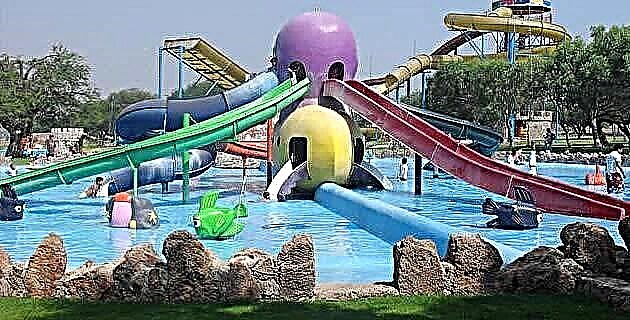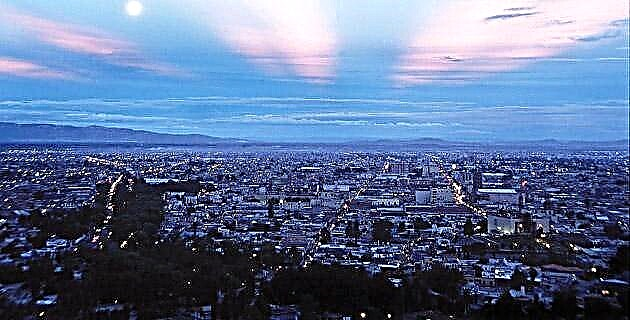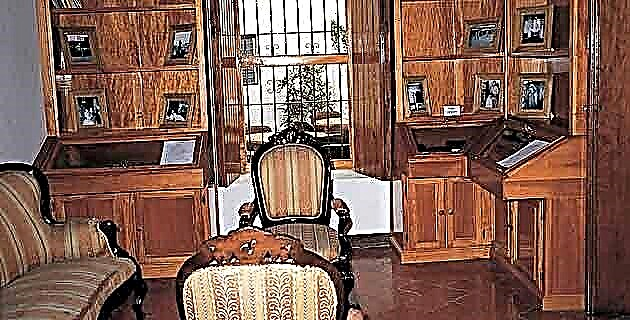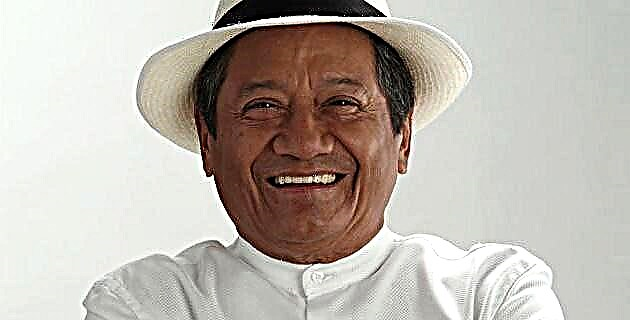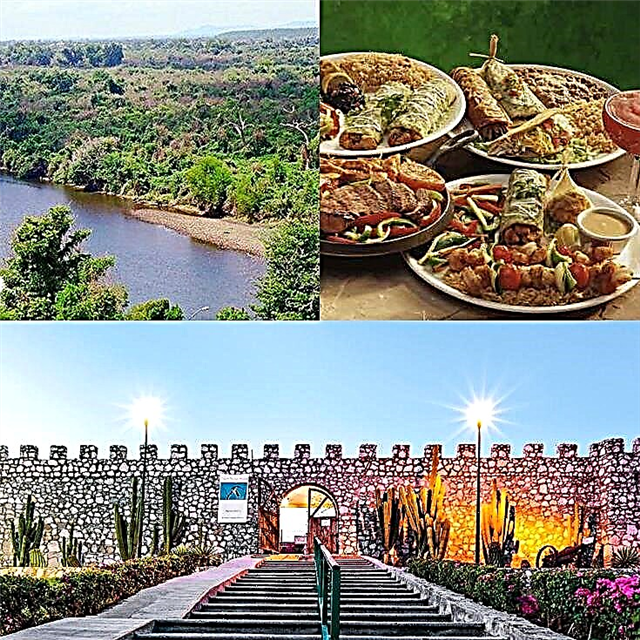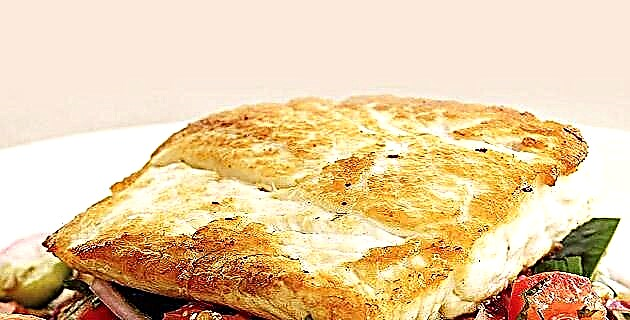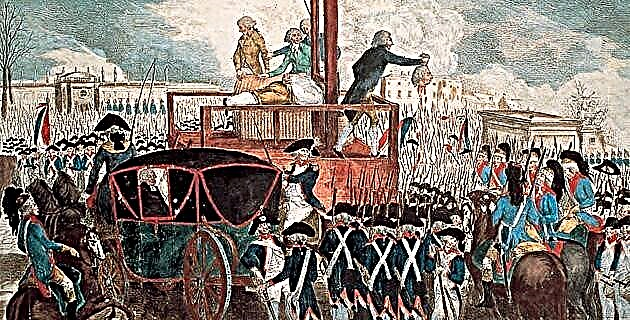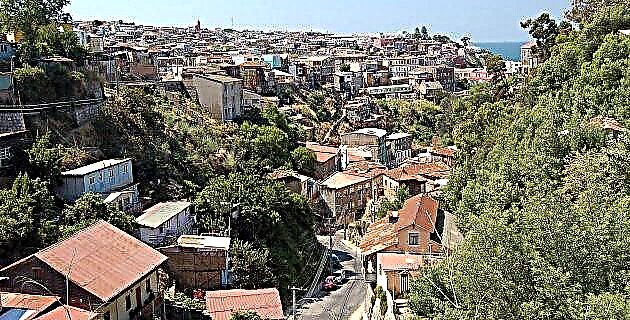
A tour through the streets of its historic center, recognized as a World Heritage Site by UNESCO, will allow you to admire the magnificent architecture of its colonial buildings, as well as savor the exquisite cuisine of Queretaro.
Gateway to the north and crossroads, traditional in character, almost stoic but with innate protagonism, with a Baroque soul, neoclassical face, eclectic heart and Mudejar reminiscences, Santiago de Querétaro, capital of the homonymous state and Cultural Heritage of Humanity, keeps with zeal his indomitable past, his New Spanish heritage and his Mexican pride. Its central location and excellent communication routes facilitate a weekend visit.
FRIDAY
Leaving Mexico City by the Pan-American Highway, in just over two hours we have in view the huge STATUE OF THE CACIQUE CONQUISTADOR CONÍN, Fernando de Tapia, who welcomes us to the “great ball game” or “place of rocks ”. We refer, of course, to the city of Santiago de Querétaro.
The ocher evening light illuminates the towers and domes of the historic center, so we enter the narrow streets of pink quarry in search of accommodation. Although the city has a large number of hotels for all tastes and budgets, we decided on the MESÓN DE SANTA ROSA, located in an old construction that on the outside looks like the “Burned Portal”, known as such because it caught fire in 1864 .
To stretch our legs a bit and start raving about the beautiful pink quarry and the mixture of Baroque and Neoclassical Queretanos, we cross the street and find ourselves in the PLAZA DE ARMAS, whose central point is the FUENTE DEL MARQUÉS, known by some as the “Fountain of the dogs”, as four dogs shoot jets of water from their noses, each one on its respective side. Around the square we find buildings such as the PALACIO DE GOBIERNO, which was the home of Mrs. Josefa Ortiz de Domínguez, the Corregidora, and from where notice was given that the insurgent conspiracy had been discovered, and the CASA DE ECALA that surprises us with its Baroque façade and its balconies with wrought iron railings. The atmosphere on Friday night is boisterous and it is not uncommon to see a trio delighting the romantic passersby, or a troubadour singing to a group of boys.
Around the square there are several open-air restaurants in which the colonial flavor is mixed with the aromas of Mexican food, cheeses and wines, which are accompanied by the strumming of the guitar that is heard in some corner. So, we get ready for dinner, starting with some traditional gorditas de crumbs. We enjoyed a good glass of red wine under the PORTAL DE DOLORES accompanied by flamenco music and the “tablao”. It is late now and we retire to rest, because tomorrow there is much to go.
SATURDAY
We left very early to take advantage of the cool of the morning. We have breakfast once more in the square where the options range from divorced eggs to a cut of meat, passing through the typical pozole.
Once the energies have been restored, we take Venustiano Carranza street until we reach the PLAZA DE LOS FUNDADORES. If you are an observer you will notice that we have been climbing. We are at the top of CERRO EL SANGREMAL, where the history of the city begins, because, according to legend, this was where the Apostle Santiago appeared with a cross while a battle was being fought between Chichimecas and Spaniards, after which the former gave up their defense. In this square are the figures of four of the founders. The construction that we have before us is the TEMPLE AND CONVENT OF LA SANTA CRUZ, founded at the end of the 17th century and where the FIDE Propaganda College was established, the first in America, from where the friars Junípero Serra and Antonio Margil de Jesús came to the spiritual conquest of the north. Part of the old convent can be visited, including its garden with the famous tree of crosses, the kitchen, the refectory and the cell that served as a prison for Maximilian of Habsburg.
We leave Santa Cruz and arrive at the FUENTE DE NUESTRA SEÑORA DEL PILAR, where the story of the introduction of water to the city is told. We go through the perimeter fence of the convent and arrive at the PANTEÓN DE LOS QUERETANOS ILUSTRES, located in what was part of the garden of the religious building. Here are the remains of the corregidores Don Miguel Domínguez and Doña Josefa Ortiz de Domínguez, as well as the insurgents Epigmenio González and Ignacio Pérez. Outside the pantheon there is a viewpoint from where you have a privileged view of the AQUEDUCT, a huge hydraulic work that became an icon of the city. It was carried out by Don Juan Antonio de Urrutia y Arana, Marquis of Villa del Villar del Águila, between 1726 and 1735, to bring water to the city at the request of the Capuchin nuns. It consists of 74 arches along 1,280 meters.
We go down from Sangremal along Independencia Street, heading west, and at number 59 is the CASA DE LA ZACATECANA MUSEUM, a 17th century mansion that receives its name from a well-known legend that gives soul to these streets. Inside we enjoy paintings, furniture and collections of New Spanish art. We continue the tour and we arrive at the corner of Corregidora Avenue. We are in the PORTAL ALLENDE and in front of us, crossing the avenue, is the PLAZA DE LA CONSTITUCIÓN, remodeled a few years ago.
We continue on Corregidora and arrive at the TEMPLE AND EX-CONVENT OF SAN FRANCISCO, founded in 1550. The temple has a neoclassical stone doorway, where the main element is a relief of Santiago Apóstol, patron of the city. Inside, its sober style contrasts with the beautiful stalls of the high choir and its monumental lectern. The former convent houses the REGIONAL MUSEUM OF QUERÉTARO, essential to understand the history of the state. The archeology rooms and Indian villages of Querétaro give us a vision of its millenary tradition, and in the site room we soak up the evangelizing effort and learn about the history of the museum's headquarters building.
We went out with the centuries over, and nothing better to digest history than the ZENEA GARDEN, which is located across the street. It owes its name to the governor Benito Santos Zenea, who planted some of the trees that still shade the quarry kiosk and the 19th century iron fountain topped with the goddess Hebe. Always busy boleros, eternal readers of the morning newspaper and children flitting around the balloon, set the central garden. We walked on Avenida Juárez and a block later we arrived at the TEATRO DE LA REPÚBLICA, inaugurated in 1852 as Teatro Iturbide. Inside its French-style interior we can still hear the ghosts of Maximiliano and his court martial, the diva Ángela Peralta and the uproar of the deputies promulgating the 1917 Constitution.
To eat without losing the flavor of Queretaro, we turned the corner and settled in LA MARIPOSA RESTAURANT, with a great tradition and where, according to me, the best enchiladas in Quereta are eaten and the tastiest ice cream of mantecado. We ask for this one to take away, as walking is better enjoyed.
And so, walking, we continue to the west, on Hidalgo Avenue. Without hurrying we observed the colonial facades with regal gates studded with forged ironwork, and we reached Vicente Guerrero Street and turned left; in front of us we have the CAPUCHINAS TEMPLE and its convent, which now houses the CITY MUSEUM, with permanent exhibitions and spaces for artistic creation and dissemination. Continuing on the same street, we arrive at the GUERRERO GARDEN, with huge laurels that overlook the MUNICIPAL PALACE. At the corner of Madero and Ocampo avenues is the CATHEDRAL, the TEMPLE OF SAN FELIPE NERI. Here, Don Miguel Hidalgo y Costilla celebrated the dedication and blessing mass, being the priest of Dolores. The oratory of the temple is converted into the PALACIO CONÍN with government offices.
On Madero, towards the east, we find ourselves in the TEMPLE OF SANTA CLARA, built at the beginning of the 17th century under the auspices of Don Diego de Tapia, son of Conín. Nothing remains of the convent, but inside the temple one of the most important Baroque decorations in the country is preserved. It is necessary to sit down to admire every detail of the altarpieces, the pulpit, the high and low choirs. On the GARDEN OF SANTA CLARA is located the FUENTE DE NEPTUNO, with its more than 200 years, and one block, on Allende street, we admire another sample of Mexican baroque: the TEMPLE AND EX-CONVENT OF SAN AGUSTÍN. The cover resembles an altarpiece with Solomonic columns that frame the Lord of the Cover. The dome, adorned with blue mosaics and six figures of musical angels in indigenous garb, is admirable. On one side of the temple, in what was the convent, is located the MUSEUM OF ART OF QUERÉTARO. With our mouths open in admiration, we are presented with the cloister, with such lavish ornamentation that it is necessary to pause to interpret the undulating cornices, the figures with expressive faces, the masks, the columns and all the iconography that surrounds us without leaving us a breath. As if that were not enough, the museum houses a pictorial collection with signatures such as those of Cristóbal de Villalpando and Miguel Cabrera, among many others.
Returning down the street, we know, with prior permission, the CASA DE LA MARQUESA, a stately mansion today converted into a luxurious hotel. On Corregidora, the Libertad walkway climbs, full of handicrafts, from silver, brass, Bernal textiles and, of course, Otomi dolls. Once again we find ourselves in the Plaza de Armas and take Pasteur street. One block away stands the TEMPLE OF THE CONGREGATION OF GUADALUPE with its two towers of national colors. Inside we appreciate its neoclassical ornamentation and its organ manufactured by the architect Ignacio Mariano de las Casas. In the square that is located in front, the pots with piloncillo honey boil waiting for the buñuelos to take their sweet bath. We do not consider it correct to keep the fritters waiting, so we get to work.
We return to Cinco de Mayo Street and when we go down we find the CASONA DE LOS CINCO PATIOS, built by the Count of Regla, Don Pedro Romero de Terreros, admirable for its passageways that connect with the interior. We have dinner at his RESTAURANT SAN MIGUELITO and, to end the day, we enjoy a drink at LA VIEJOTECA, with its old furniture that includes a complete pharmacy.
SUNDAY
We have breakfast in front of the Corregidora Garden, which on this day has a typical provincial atmosphere.
One block to the north is the TEMPLE OF SAN ANTONIO, with its beautiful plaza full of parishioners. In the upper part of the nave of the temple, its monumental golden organ stands out above the red decoration.
We walked one block on Morelos street and arrived at the TEMPLO DEL CARMEN, built in the seventeenth century. We return through Morelos, Pasteur and September 16, until we reach the TEMPLE OF SANTIAGO APÓSTOL and the old schools of San Ignacio de Loyola and San Francisco Javier, with their baroque style cloister.
By car we headed to CERRO DE LAS CAMPANAS, which was declared a National Park and which in its 58 hectares houses a neo-Gothic chapel built in 1900 by order of the Emperor of Austria, and where some tombstones show the exact place where Maximiliano was shot of Habsburg and his generals Mejía and Miramón. Right here, the HISTORICAL SITE MUSEUM presents us with an overview of the French intervention and its exterior, with its benches and games, make it an ideal place to rest with the family.
On Ezequiel Montes avenue we arrive at MARIANO DE LAS CASAS SQUARE, from where the view is delighted with the SANTA ROSA DE VITERBO TEMPLE AND CONVENT, with a clear Mudejar influence. Its interior is another extraordinary example of the richness of the Mexican Baroque, with six gilded altarpieces from the 18th century and a pictorial collection worthy of appreciation. Its cloister is occupied by a school and it is possible to visit it only during the week.
In the portals of the square there are some restaurants where we decided to stay to eat and thus be enjoying the presence of the temple.
We head down Avenida de los Arcos to the EL HÉRCULES FACTORY, which has its origins in 1531 with the creation of a wheat mill built by Diego de Tapia. Around 1830 Don Cayetano Rubio transformed it into the yarn and fabric factory that has been operating until now, giving way to the creation of a town with its workers. The construction is of two floors, of eclectic style, and in its patio a statue of the Greek god welcomes.
It is late and we must return. We know we had a long way to go and, sitting in front of the factory facade, we were delighted with a tasty handmade snow. I preferred the mantecado, that flavor that will make me feel for a while longer that I am still in Santiago de Querétaro.

